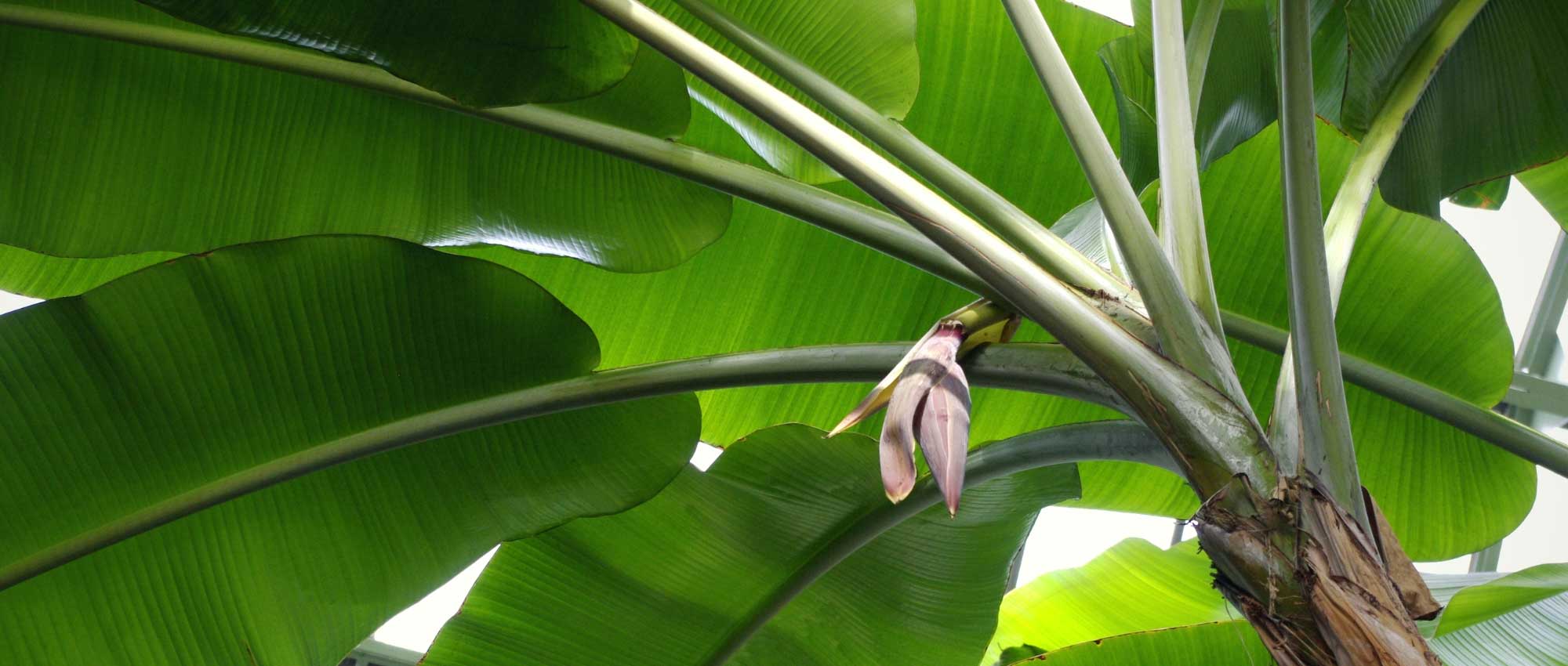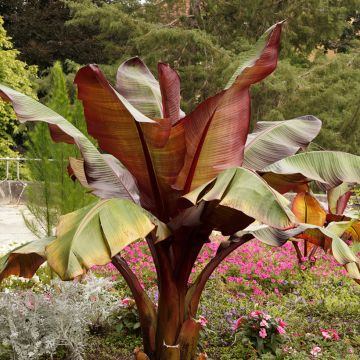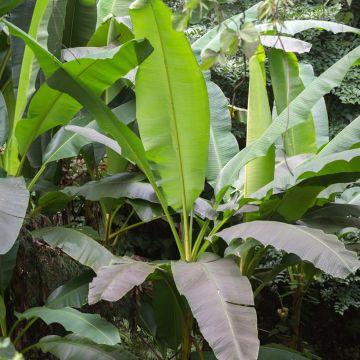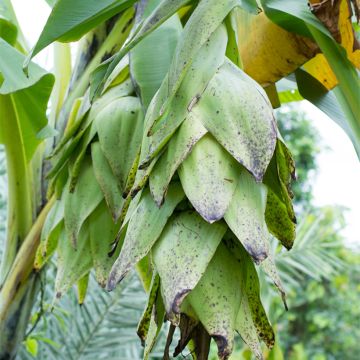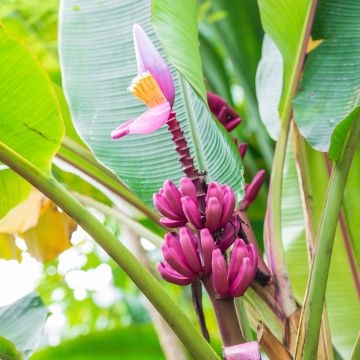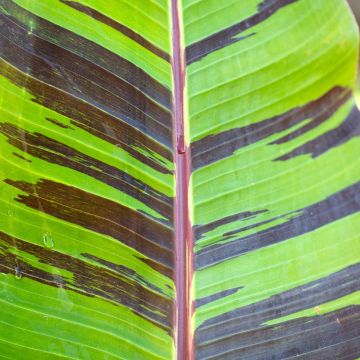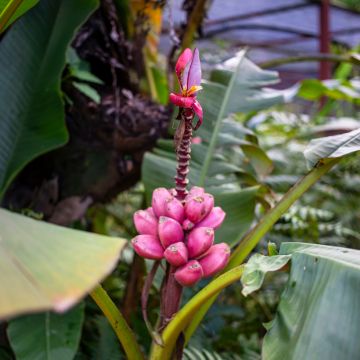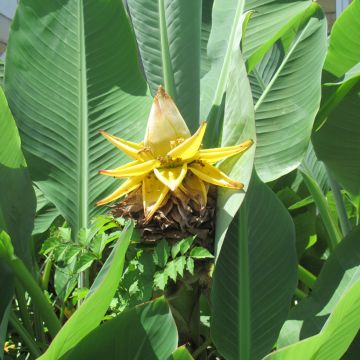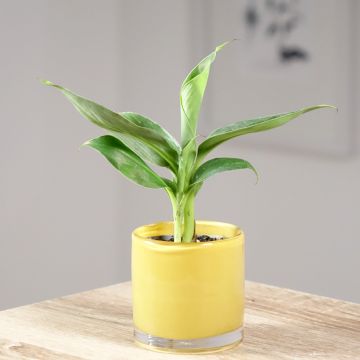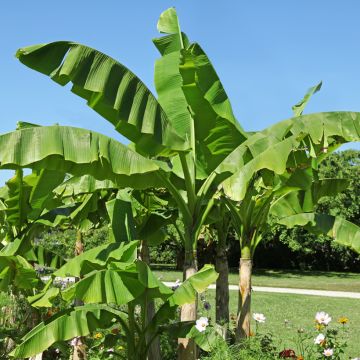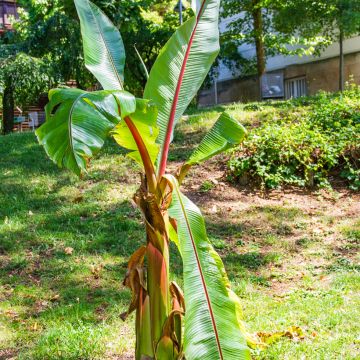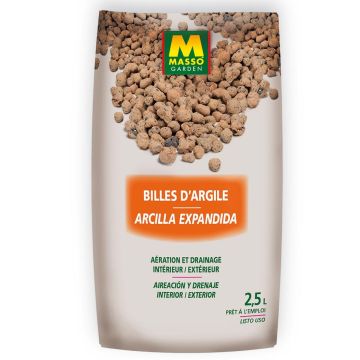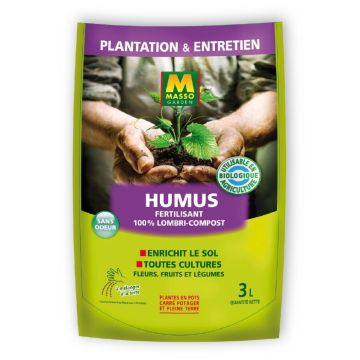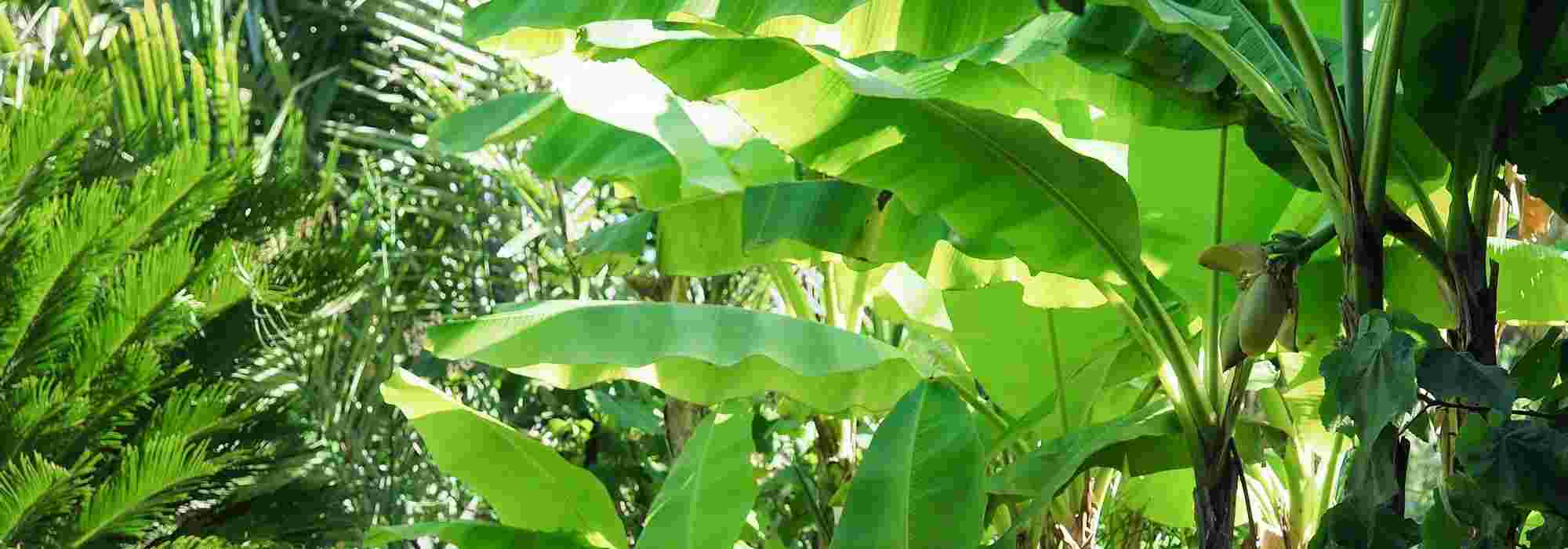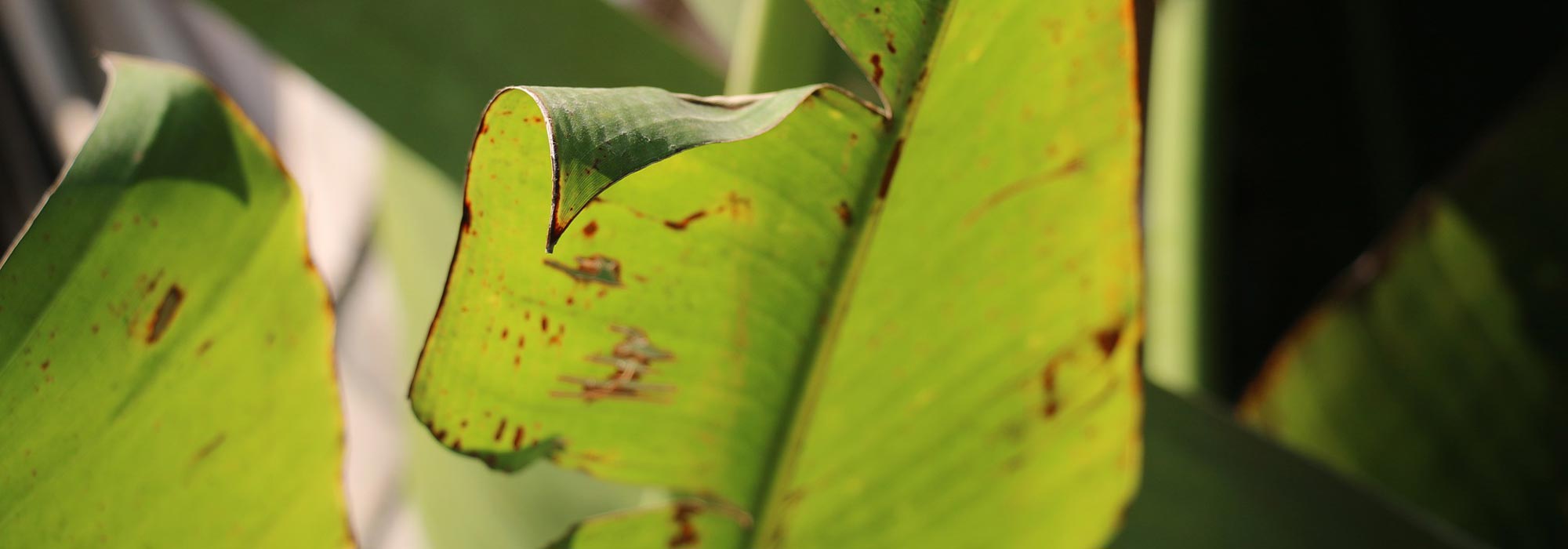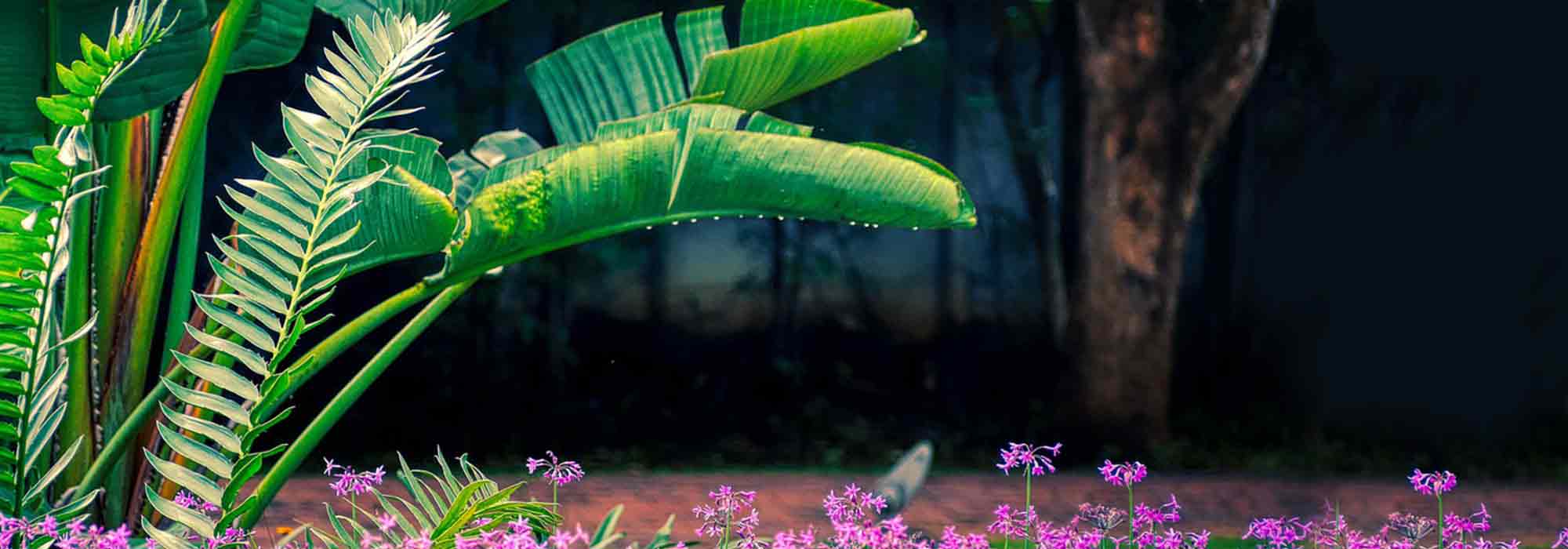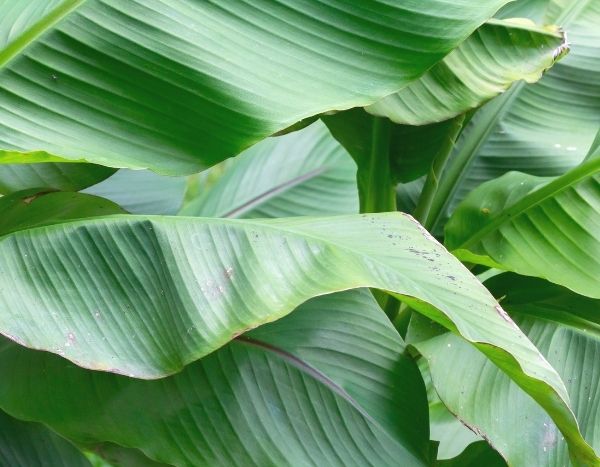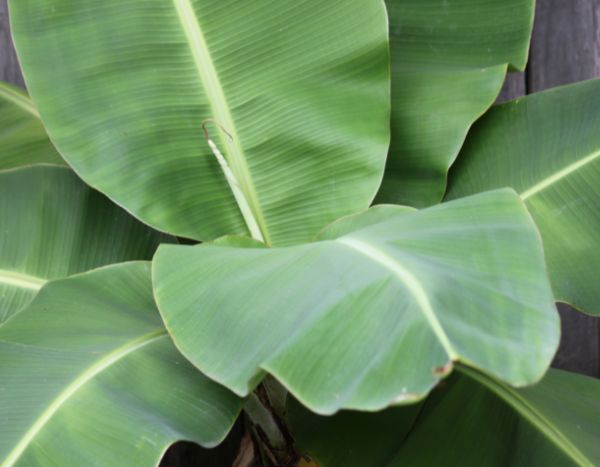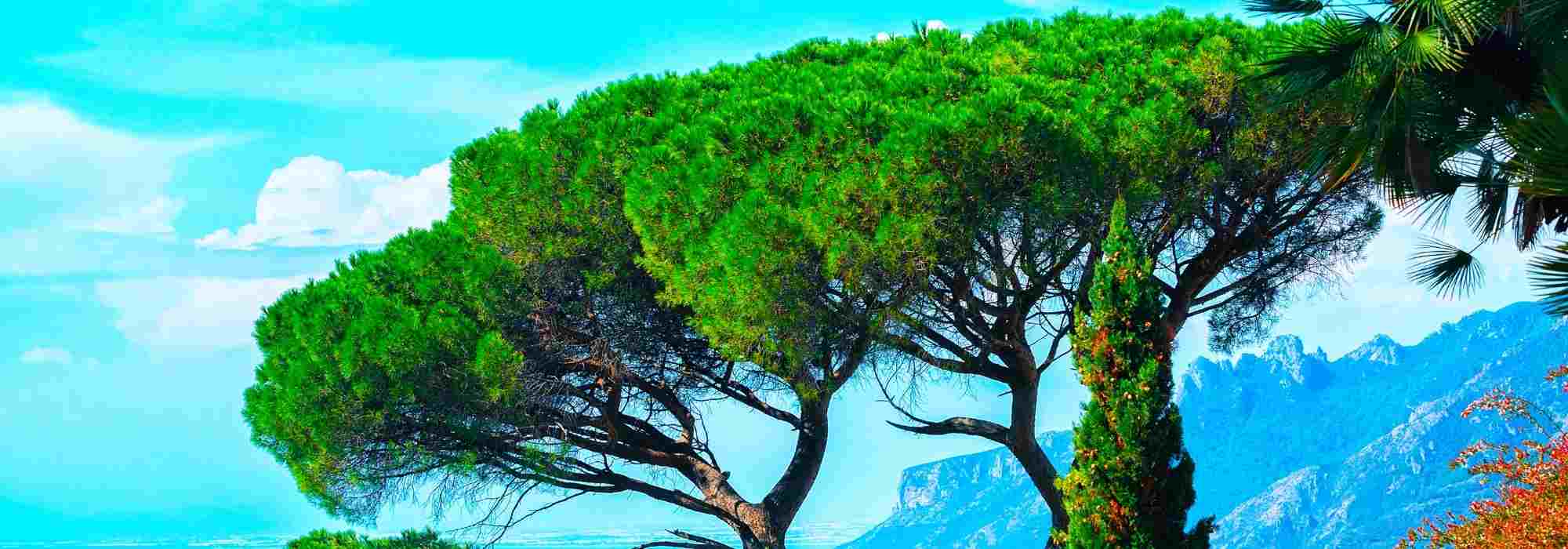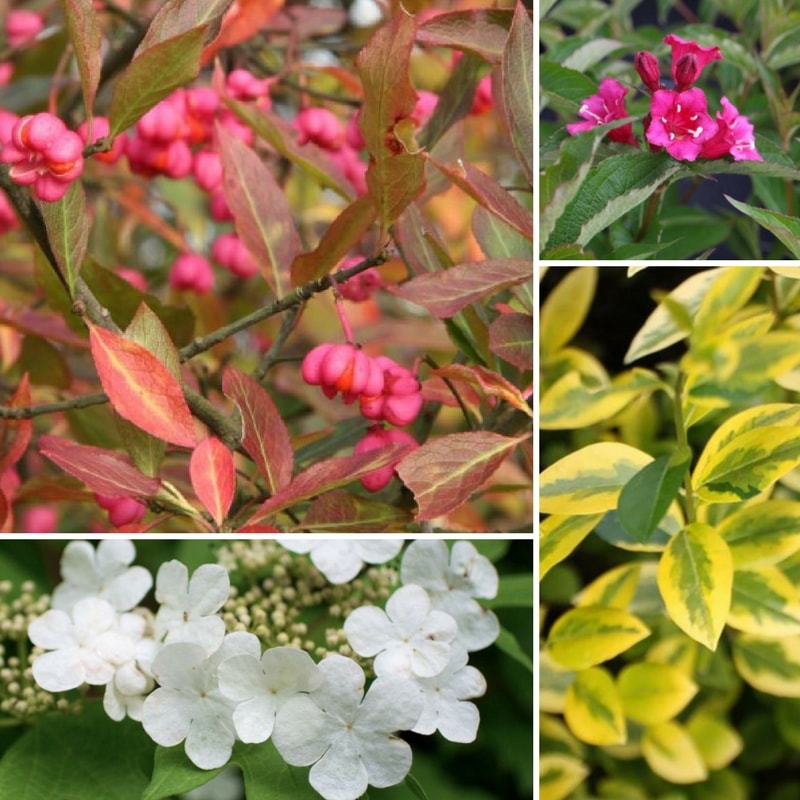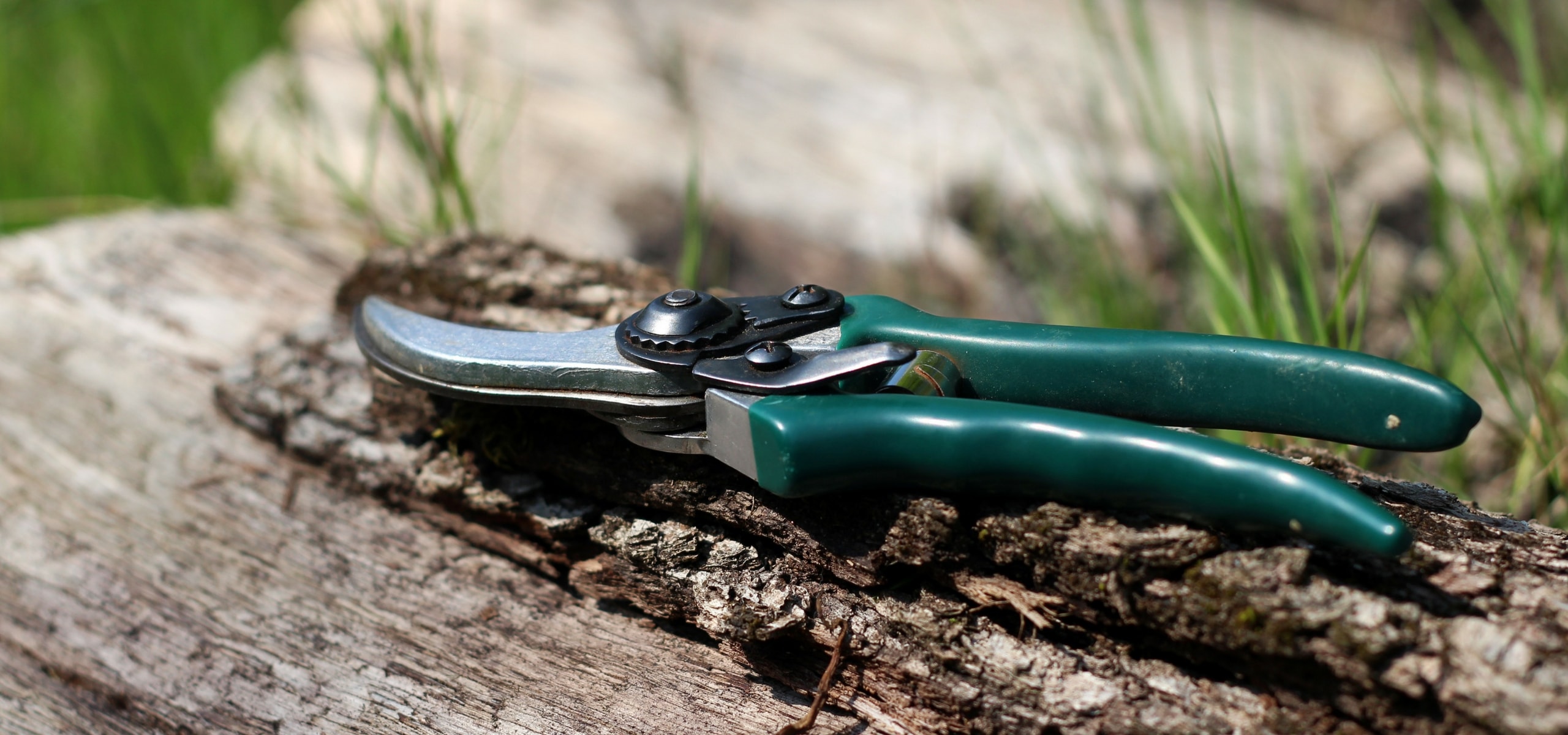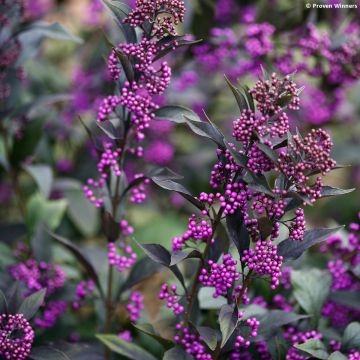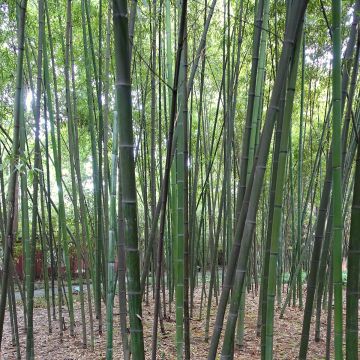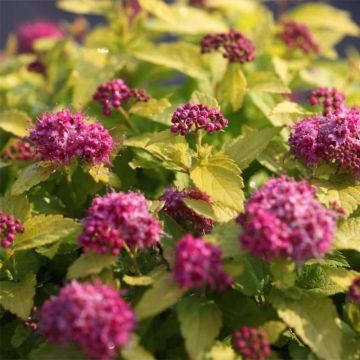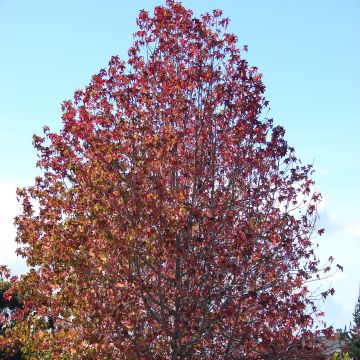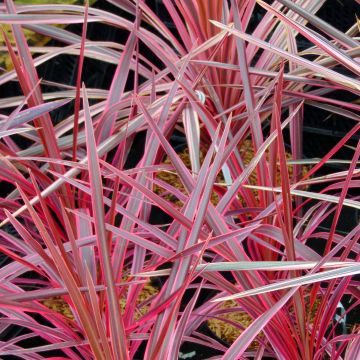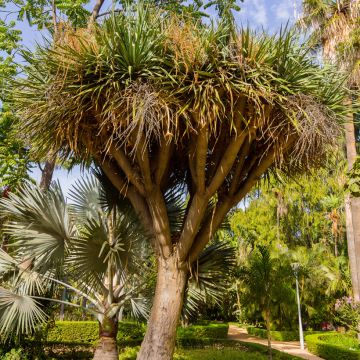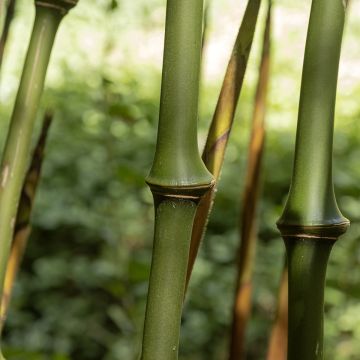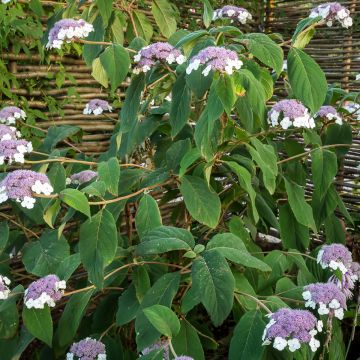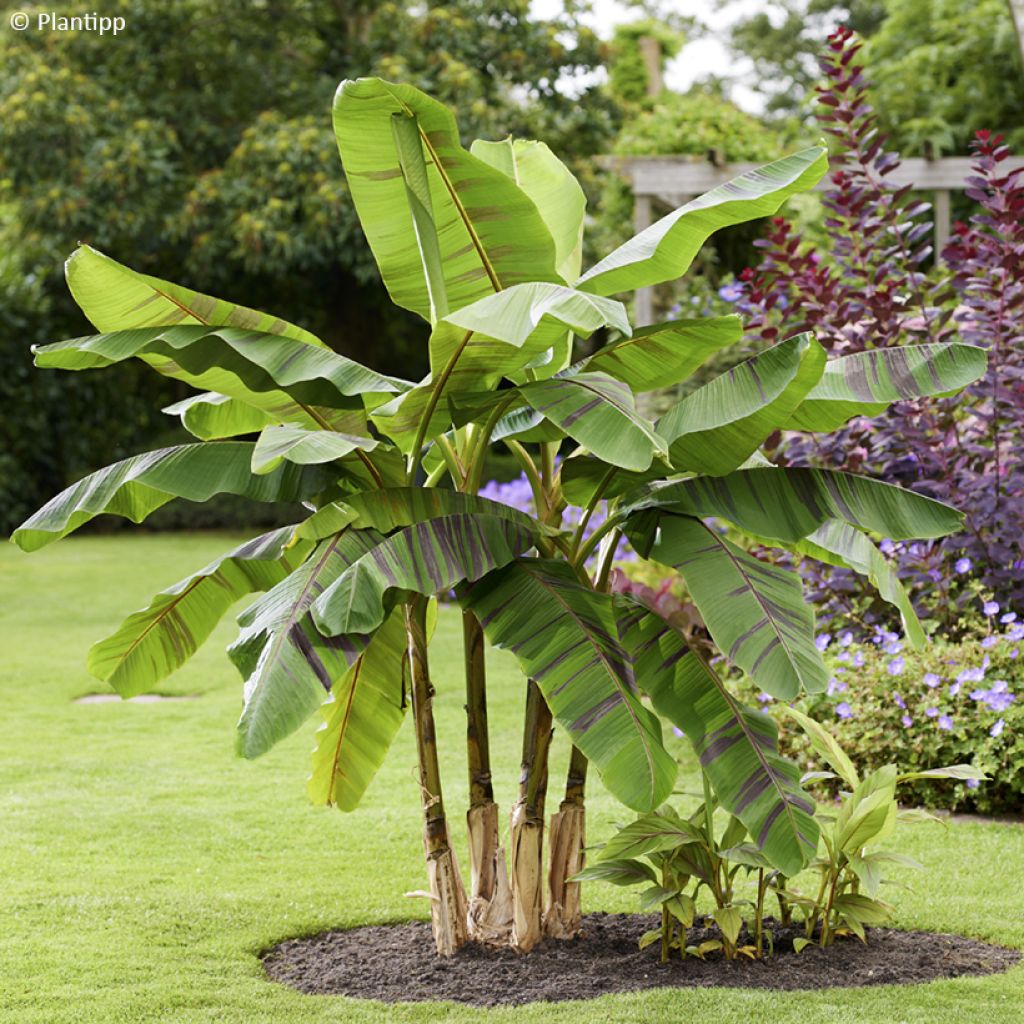

Musa sikkimensis Ever Red - Hardy Banana
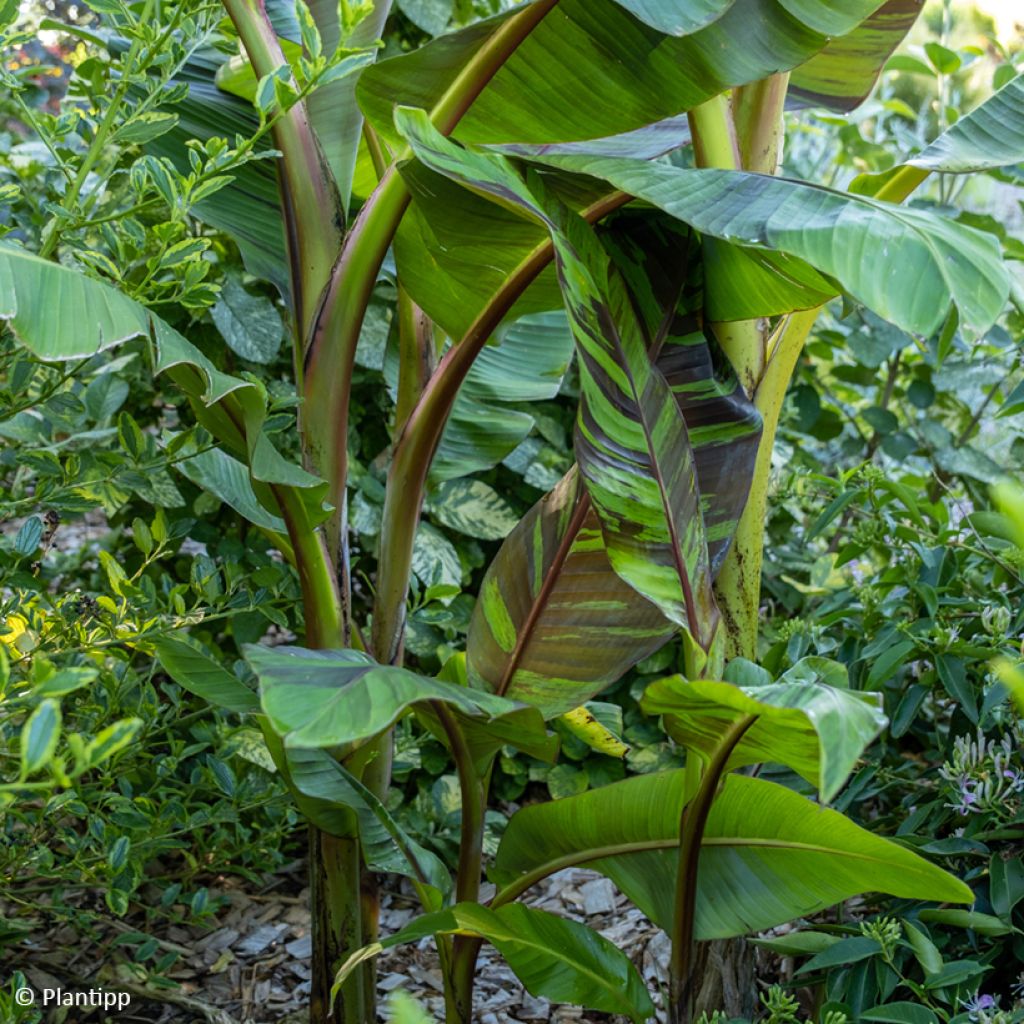

Musa sikkimensis Ever Red - Hardy Banana
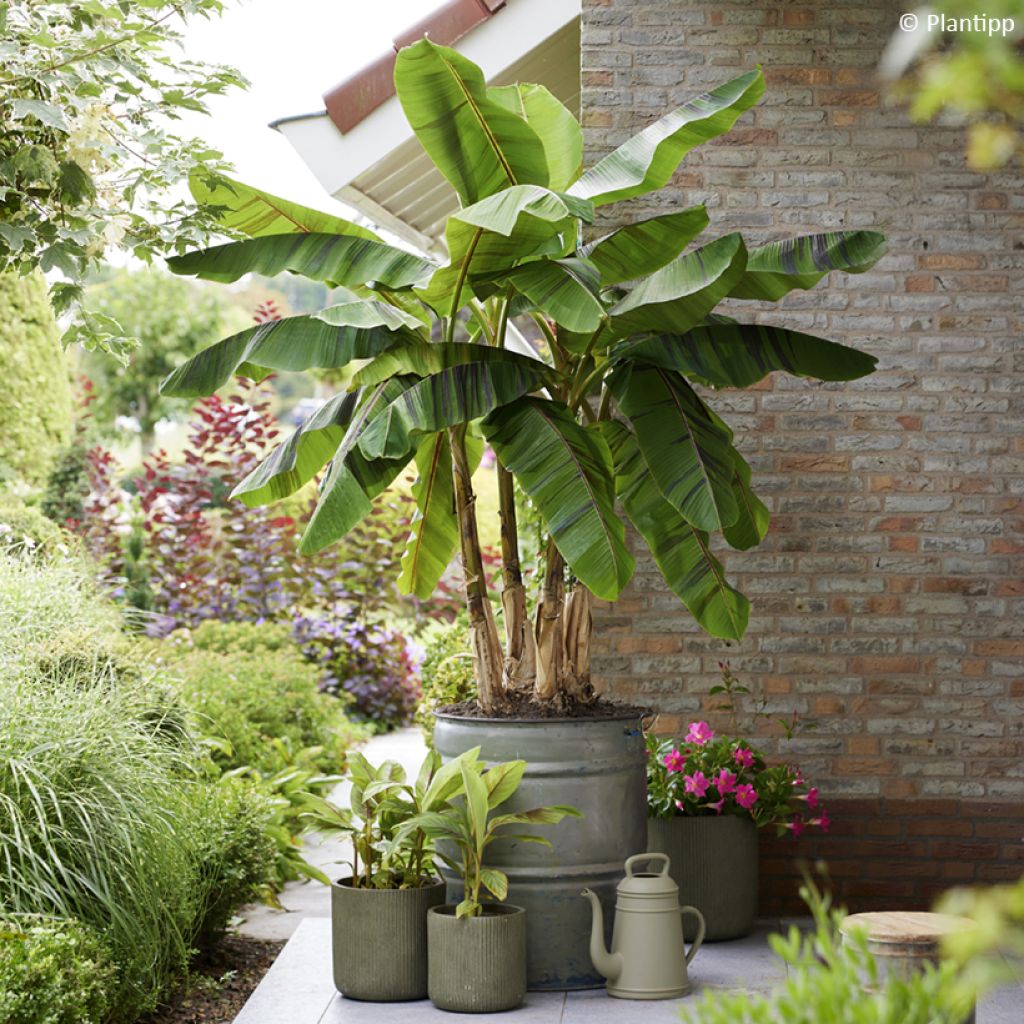

Musa sikkimensis Ever Red - Hardy Banana
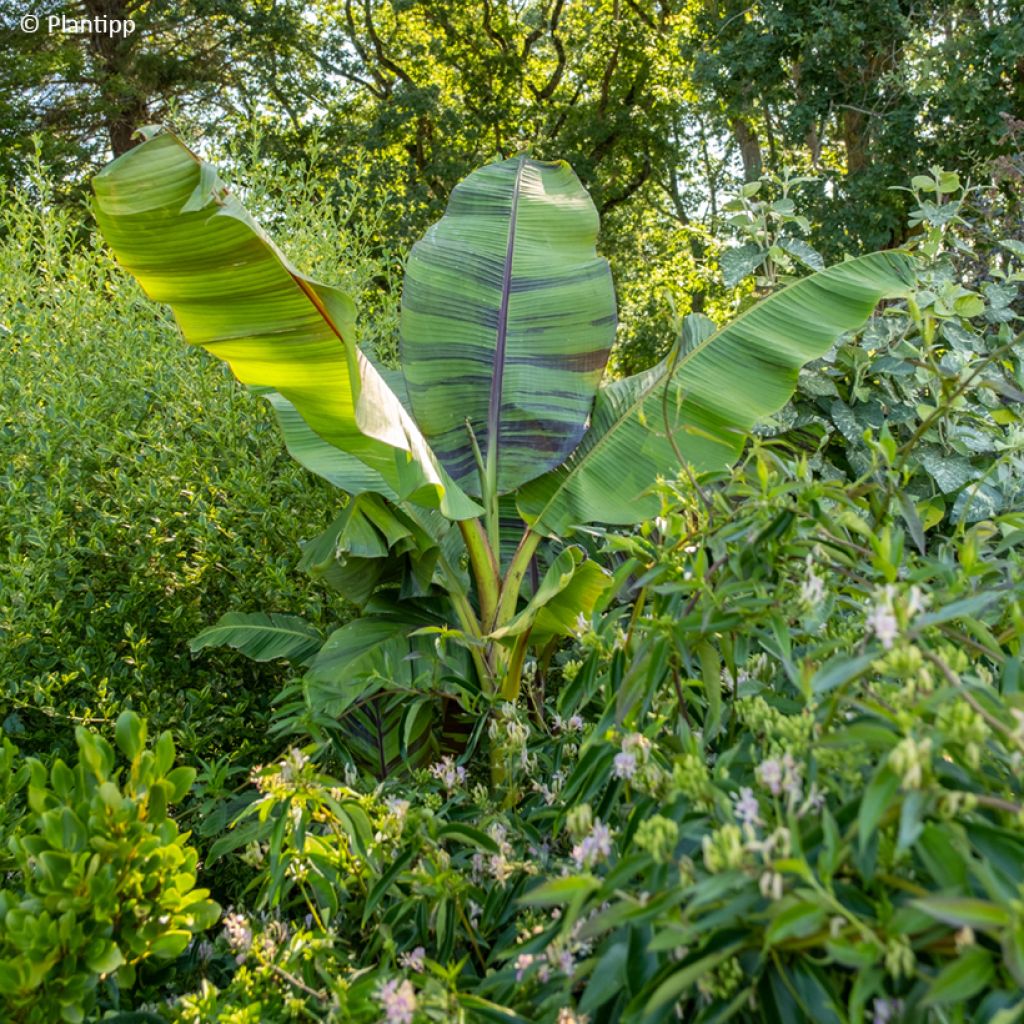

Musa sikkimensis Ever Red - Hardy Banana
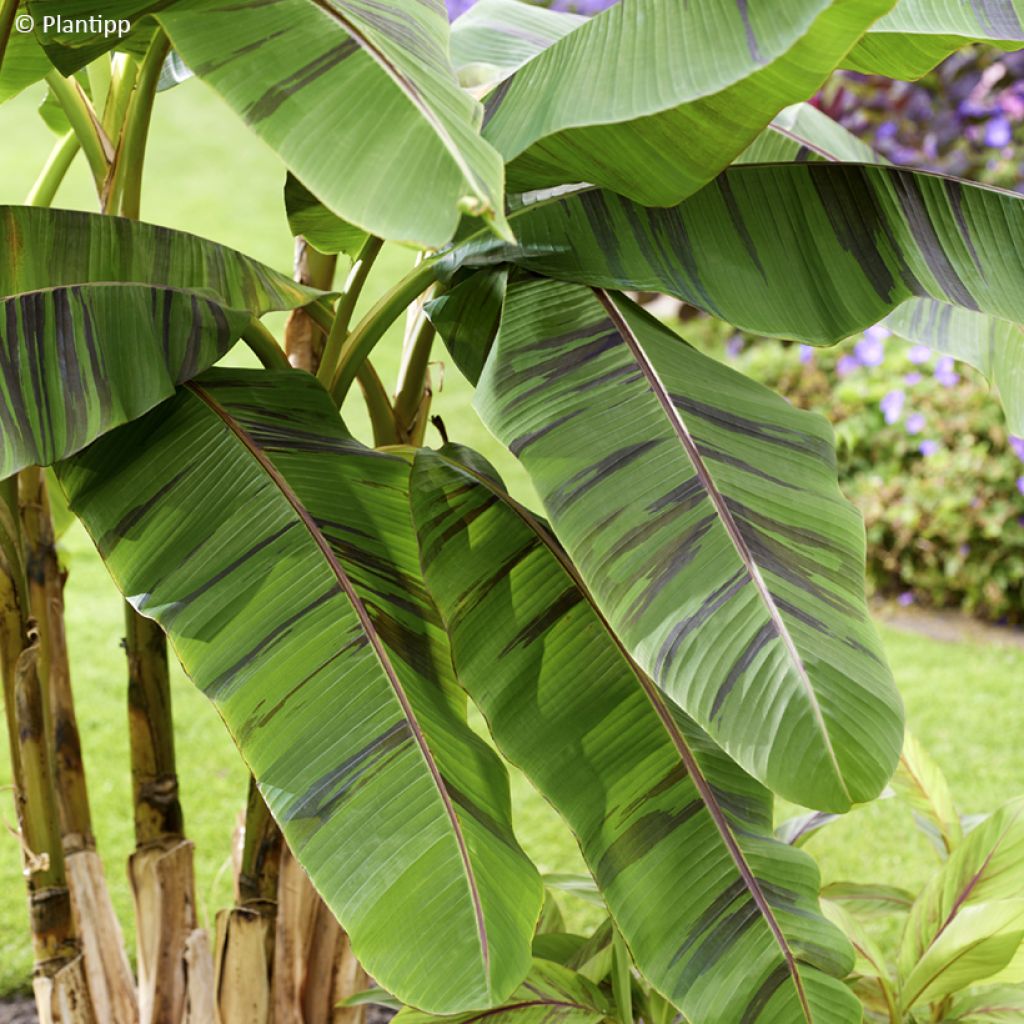

Musa sikkimensis Ever Red - Hardy Banana
Musa sikkimensis Ever Red - Hardy Banana
Musa sikkimensis 'Lou1' EVER RED
Darjeeling Banana, Sikkim Banana, Himalayan Banana Tree
Special offer!
Receive a €20 voucher for any order over €90 (excluding delivery costs, credit notes, and plastic-free options)!
1- Add your favorite plants to your cart.
2- Once you have reached €90, confirm your order (you can even choose the delivery date!).
3- As soon as your order is shipped, you will receive an email containing your voucher code, valid for 3 months (90 days).
Your voucher is unique and can only be used once, for any order with a minimum value of €20, excluding delivery costs.
Can be combined with other current offers, non-divisible and non-refundable.
Home or relay delivery (depending on size and destination)
Schedule delivery date,
and select date in basket
This plant carries a 12 months recovery warranty
More information
We guarantee the quality of our plants for a full growing cycle, and will replace at our expense any plant that fails to recover under normal climatic and planting conditions.
Would this plant suit my garden?
Set up your Plantfit profile →
Description
The Musa sikkimensis 'Ever Red', also known as the Sikkim Banana Tree, is a variety derived from a relatively hardy banana tree, native to the forests of the Himalayas, with a stump that can withstand short periods of frost, down to -12°C. This distinctly exotic-looking variety produces green leaves with prominent red stripes, more so than the 'Red Tiger' from which it originates. Its leaves are quite wind-resistant, more so than those of the Musa basjoo. Its tropical appearance and ease of cultivation in fertile, moist soil make it a welcome addition to many gardens.
The Sikkim Banana Tree, also known as Musa hookeri or Darjeeling Banana Tree, is a giant herbaceous perennial with a tuberous rhizome, belonging to the Musaceae family. It grows in the Himalayan forests at altitudes of around 1700 m, sometimes up to 2000 m. The 'Ever Red' variety likewise develops a green pseudo-trunk (stipe) tinged with red, formed by the rolled and tight petioles of the leaves, but never producing wood.
Its ornamental attraction lies in its light green leaves with purple undersides, abundantly striped with burgundy-purple on top, exuding undeniable tropical charm. They reach a maximum length of 1.5 m, and quickly form a beautiful clump 3 to 4 m high and 1.5 to 2 m wide at 10 years old. In warm climates, it produces yellow to cream flowers in summer, surrounded by pink bracts followed, in hot regions, by 'bananas' with a sweetish but hard flesh, lacking in taste. In winter, the leaves disappear at the first frosts but the plant will regrow from the base the following spring. It is a semelparous plant, meaning that it dies after the ripening of the fruits, and new trunks appear each year from buds carried by the rhizome. Its hardiness is quite good (down to -12°C) for well-established specimens. It is advisable to protect younger plants from severe frosts.
Still underused in European gardens, the 'Ever Red' Himalayan Banana Tree can be used in borders, as a standalone plant, or placed in a large pot on patios or in conservatories. When potted, it is necessary to monitor watering and protect the pot in winter. This remarkable plant, like cannas, the Tetrapanax papyfera, bamboos, giant miscanthus, or castor oil plants, gives a highly exotic look to our temperate gardens.
Like perennial plants, banana trees are dormant during winter: their above-ground parts dry up and die. Plants shipped in winter are therefore pruned to the ground (leaves and stems) by our teams to allow for better plant growth in spring.
Musa sikkimensis Ever Red - Hardy Banana in pictures
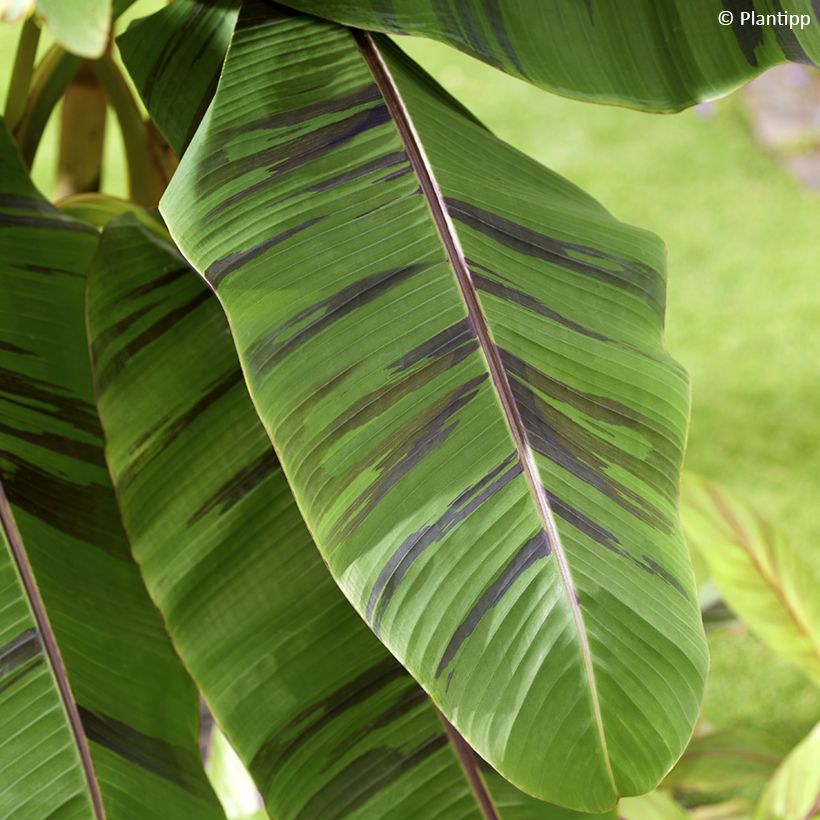

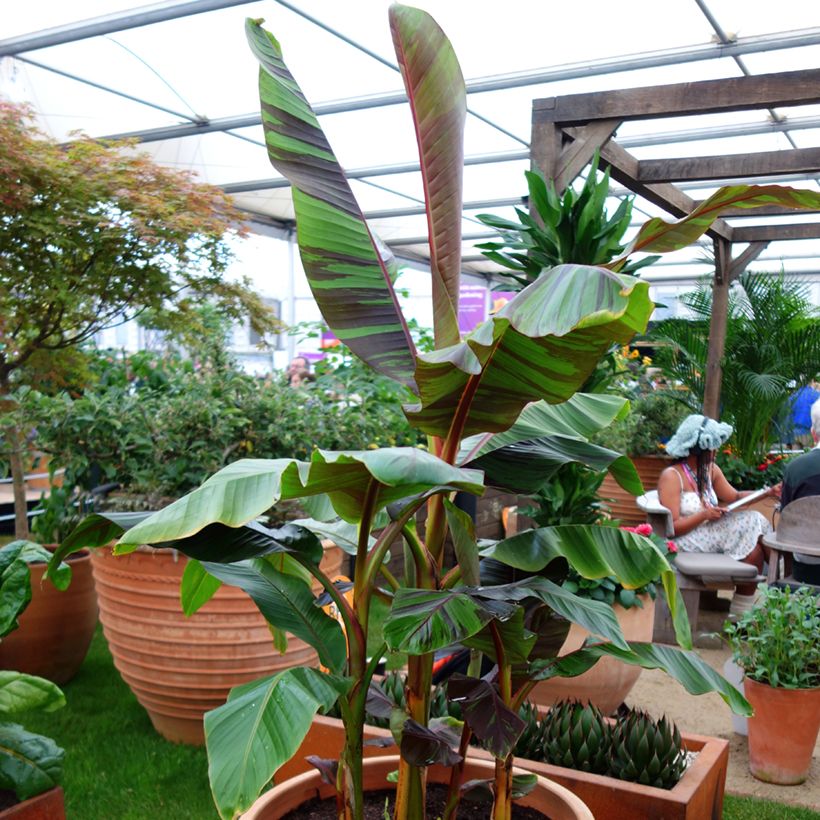

Flowering
Foliage
Plant habit
Botanical data
Musa
sikkimensis
'Lou1' EVER RED
Musaceae
Darjeeling Banana, Sikkim Banana, Himalayan Banana Tree
Cultivar or hybrid
Other Musa - Banana tree
View all →Planting and care
Planting the Musa sikkimensis Ever Red should be done in spring or summer, in well-drained, humus-rich soil that stays moist. Choose a sunny and sheltered location as the wind can tear the leaves. Soak the root ball in water for a while before planting. Dig a hole (3 times the volume of the root ball), place a layer of gravel at the bottom for drainage. Position the root ball and cover with soil. Firm down and water generously.
In spring and summer, regularly apply organic fertiliser. Water regularly in summer (approximately 2-3 times a week). The Banana Plant is not very susceptible to diseases and pests.
In winter, trim the leaves along the trunk and protect the stump by placing a wire mesh filled with dead leaves along the pseudo-trunk. Cover the top with a wintering cover to prevent excess moisture. The Himalayan Banana Plant will regrow from the base or from the shoots formed around the base.
Growing in a pot is possible, considering the future height of the Banana Plant (2 to 4 m). Plan for repotting approximately every 2 years. Bring the pot indoors before the first frosts to a bright location without direct sunlight. Mist the foliage if needed or place a saucer with wet clay pebbles as the Banana Plant, a tropical plant, thrives in moist environments.
Planting period
Intended location
Care
Planting & care advice
This item has not been reviewed yet - be the first to leave a review about it.
Similar products
Haven't found what you were looking for?
Hardiness is the lowest winter temperature a plant can endure without suffering serious damage or even dying. However, hardiness is affected by location (a sheltered area, such as a patio), protection (winter cover) and soil type (hardiness is improved by well-drained soil).

Photo Sharing Terms & Conditions
In order to encourage gardeners to interact and share their experiences, Promesse de fleurs offers various media enabling content to be uploaded onto its Site - in particular via the ‘Photo sharing’ module.
The User agrees to refrain from:
- Posting any content that is illegal, prejudicial, insulting, racist, inciteful to hatred, revisionist, contrary to public decency, that infringes on privacy or on the privacy rights of third parties, in particular the publicity rights of persons and goods, intellectual property rights, or the right to privacy.
- Submitting content on behalf of a third party;
- Impersonate the identity of a third party and/or publish any personal information about a third party;
In general, the User undertakes to refrain from any unethical behaviour.
All Content (in particular text, comments, files, images, photos, videos, creative works, etc.), which may be subject to property or intellectual property rights, image or other private rights, shall remain the property of the User, subject to the limited rights granted by the terms of the licence granted by Promesse de fleurs as stated below. Users are at liberty to publish or not to publish such Content on the Site, notably via the ‘Photo Sharing’ facility, and accept that this Content shall be made public and freely accessible, notably on the Internet.
Users further acknowledge, undertake to have ,and guarantee that they hold all necessary rights and permissions to publish such material on the Site, in particular with regard to the legislation in force pertaining to any privacy, property, intellectual property, image, or contractual rights, or rights of any other nature. By publishing such Content on the Site, Users acknowledge accepting full liability as publishers of the Content within the meaning of the law, and grant Promesse de fleurs, free of charge, an inclusive, worldwide licence for the said Content for the entire duration of its publication, including all reproduction, representation, up/downloading, displaying, performing, transmission, and storage rights.
Users also grant permission for their name to be linked to the Content and accept that this link may not always be made available.
By engaging in posting material, Users consent to their Content becoming automatically accessible on the Internet, in particular on other sites and/or blogs and/or web pages of the Promesse de fleurs site, including in particular social pages and the Promesse de fleurs catalogue.
Users may secure the removal of entrusted content free of charge by issuing a simple request via our contact form.
The flowering period indicated on our website applies to countries and regions located in USDA zone 8 (France, the United Kingdom, Ireland, the Netherlands, etc.)
It will vary according to where you live:
- In zones 9 to 10 (Italy, Spain, Greece, etc.), flowering will occur about 2 to 4 weeks earlier.
- In zones 6 to 7 (Germany, Poland, Slovenia, and lower mountainous regions), flowering will be delayed by 2 to 3 weeks.
- In zone 5 (Central Europe, Scandinavia), blooming will be delayed by 3 to 5 weeks.
In temperate climates, pruning of spring-flowering shrubs (forsythia, spireas, etc.) should be done just after flowering.
Pruning of summer-flowering shrubs (Indian Lilac, Perovskia, etc.) can be done in winter or spring.
In cold regions as well as with frost-sensitive plants, avoid pruning too early when severe frosts may still occur.
The planting period indicated on our website applies to countries and regions located in USDA zone 8 (France, United Kingdom, Ireland, Netherlands).
It will vary according to where you live:
- In Mediterranean zones (Marseille, Madrid, Milan, etc.), autumn and winter are the best planting periods.
- In continental zones (Strasbourg, Munich, Vienna, etc.), delay planting by 2 to 3 weeks in spring and bring it forward by 2 to 4 weeks in autumn.
- In mountainous regions (the Alps, Pyrenees, Carpathians, etc.), it is best to plant in late spring (May-June) or late summer (August-September).
The harvesting period indicated on our website applies to countries and regions in USDA zone 8 (France, England, Ireland, the Netherlands).
In colder areas (Scandinavia, Poland, Austria...) fruit and vegetable harvests are likely to be delayed by 3-4 weeks.
In warmer areas (Italy, Spain, Greece, etc.), harvesting will probably take place earlier, depending on weather conditions.
The sowing periods indicated on our website apply to countries and regions within USDA Zone 8 (France, UK, Ireland, Netherlands).
In colder areas (Scandinavia, Poland, Austria...), delay any outdoor sowing by 3-4 weeks, or sow under glass.
In warmer climes (Italy, Spain, Greece, etc.), bring outdoor sowing forward by a few weeks.






























